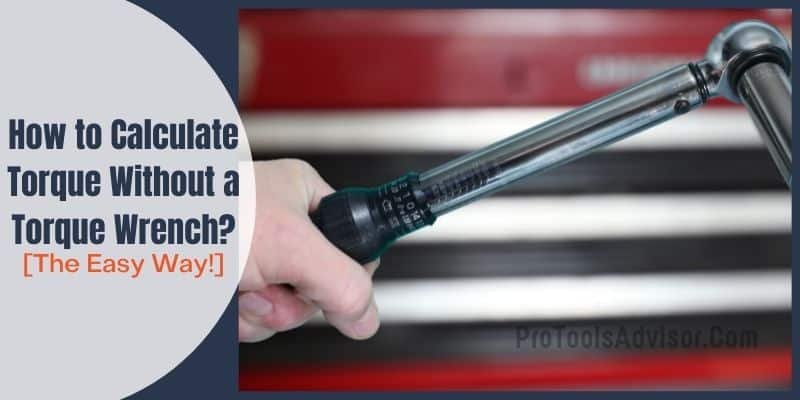Disclosure: This post contains affiliate links and I will be compensated if you make a purchase after clicking through my links. Learn More
To tighten any nuts and bolts at the correct level, you need to know the recommended torque amount. And the best way to determine torque is using a torque wrench. This tightening tool allows you to pre-set the desired torque of your fasteners and gives a signal when you reach it. .
However, not everyone keeps a torque wrench on their toolset. Then again, a good torque wrench comes with a price tag. No worries if you don’t have one. Today we are going to see how to calculate torque without a torque wrench.

Why is Torque Calculation Necessary?
Most DIYers tend to do guesswork when tightening fasteners. Many ignore the fact that parts in mechanical components come with a specific torque range and they should be assembled in that recommended range (tightness/looseness). Non compliance can cause costly damage to the system. In complex engineering of aerospace and automotive industry, safety is of utmost importance and calculating the accurate torque value is compulsory.
Do You Really Need a Torque Wrench?
For major maintenance of complex machines, we strongly suggest using torque wrenches. Error in determining the accurate torque value can be pretty dangerous. Take the example of an inlet manifold of an engine.
If you overtighten the bolt it can create a crack in the inlet. Conversely, keeping it loose may result in a leakage during fuel intake. As the engine deals with continuous ignition and burst of fuel inside the combustion chamber, a simple crack or leakage has the potential to turn into a catastrophic accident.
That being said, if you are a general mechanic and you have good access to the nuts and bolts, measuring the torque without a torque wrench is possible.
Calculating Torque Without The Torque Wrench: How To Do It?
We are going to see the DIY technique for how to get the right torque without a torque wrench.
Here are the things you will require-
- Measuring Tape
- Flat double-ended box wrench
- Spring balance (calibrated in pounds)
Step -1
First, you need to measure the wrench length from one ring to another. Let’s say, the length of the wrench is 10 inches. 12 inches equal to 1 foot. So, we will convert the parameter to foot by dividing it by 12.
10 inches = 10 / 12 = 0.84 feet
Step 2
You need to know the specified torque parameter for the bolt in foot-pounds. Let us take 16-foot pounds as the torque we need to achieve. The force will be shown in the spring balance in pounds. We need to identify how much force is needed to acquire 16 foot-pounds of torque.
To obtain the force, divide the targeted torque by the length of the wrench in feet.
Force (Pounds) = Targeted torque (ft-lbs) / length of the wrench (ft)
Force = 16 / 0.84 = 19.0 lbs.
It means we need to apply 19lbs. of force at the end of the wrench to get the torque equal to 16 foot-pounds.
Step 3
Hand-tighten the bolt as long as it rotates. Place the wrench horizontally with the fastener. If the horizontal arrangement is not possible, try to achieve an upright or straight down position. These three are the standard positioning of the wrench in this DIY method. Standard positioning is necessary because you will have to set the spring balance perpendicular to the wrench. And it is easy when you place the wrench in these 3 positions.
Step 4
Place the hook of the spring balance at the end of the wrench. Then pull it to tighten the nut. Ensure that the spring balance is in the same plane as the wrench. When you are pulling the balance, it should be perpendicular to the end of the wrench.
Step 5
Finally, observe the indicated value as you pull the balance. Place the wrench back to upright or straight down if its position has moved far from the standard. Apply the pressure again until you achieve the calculated value of force. Stop pulling and remove the spring balance when the force indicates 19.0 pounds.
Final Thoughts
We should consider achieving the manufactured specified torque to avoid any system damage or failure. Incorrect tightening of nuts can present a severe threat to the user’s safety. Using a torque wrench can get the job done for you easily.
